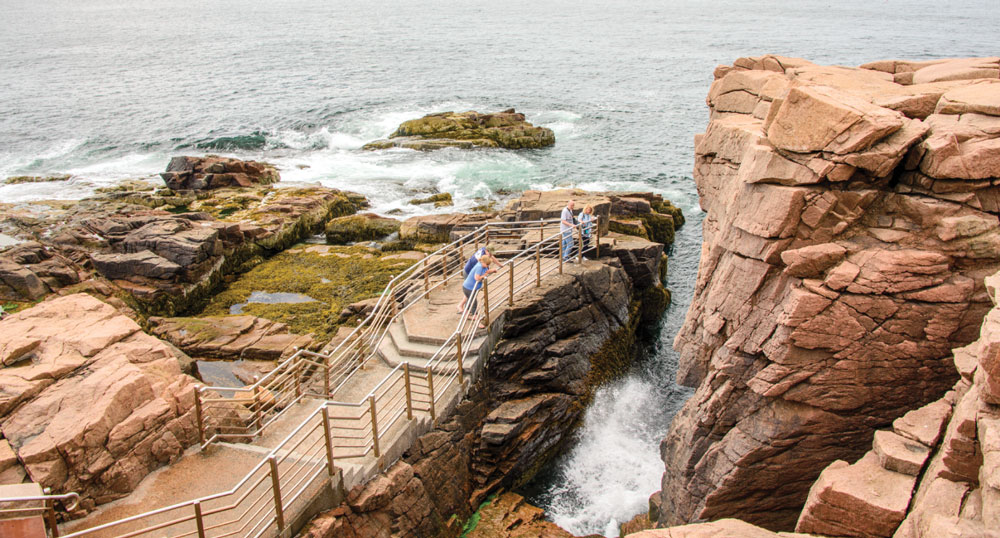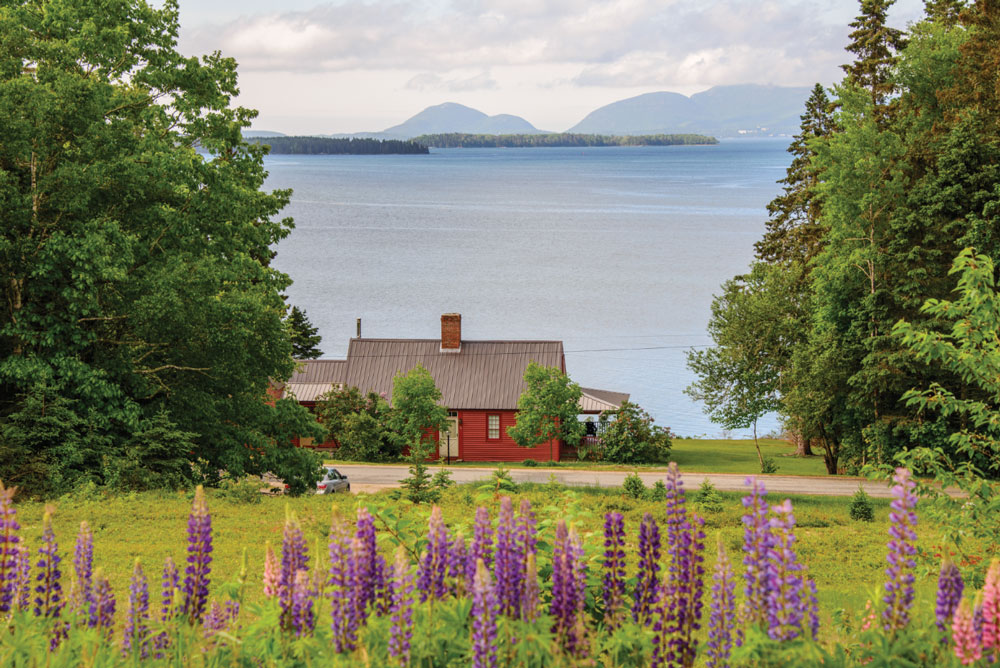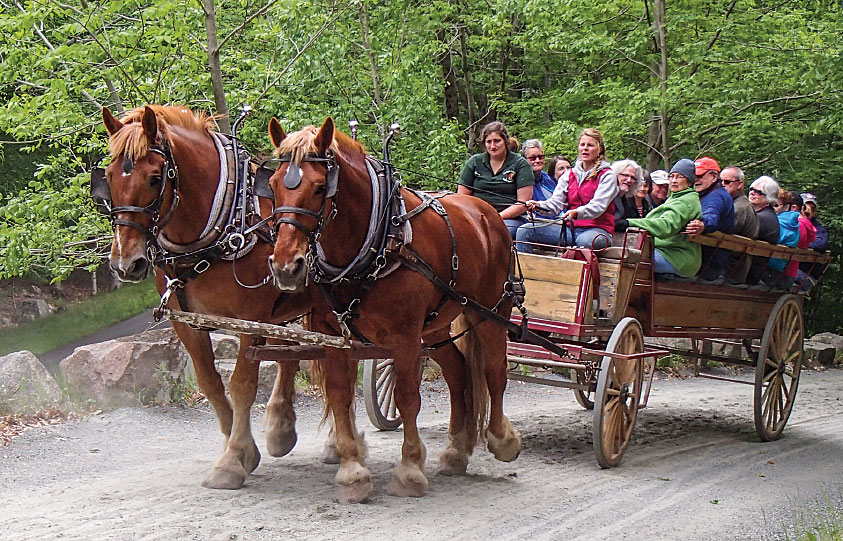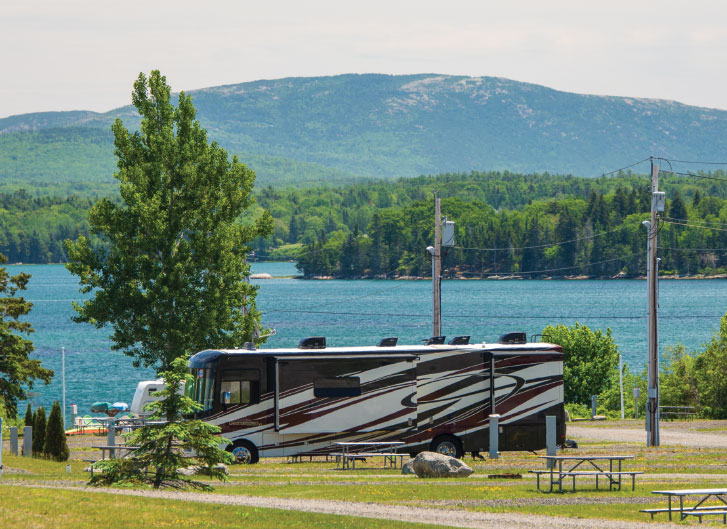Acadia National Park offers beauty and history off the beaten path
Acadia National Park on Maine’s blustery Atlantic coast is a rugged and varied land where ocean surf crashes onto craggy rocks while just a few steps from shore heavenly pine scents waft through dense woods. We were enchanted by the vast slabs of granite that make a jagged route to the sea, by the resilient lighthouses that stand watch over sailors from the shore, and by the miles of lovingly groomed trails that meander throughout the park, embracing a history all their own.
Acadia National Park spreads out across most of Mount Desert Island in an out-of-the-way corner of the country, and in addition to natural beauty, it offers a unique glimpse of America’s early roots, both working-class and aristocratic. True to the favorite seafood of the area, the island is shaped like a New England lobster’s claw, with two big lobes pointing down. The park takes up most of these two lobes, and what great fortune it is for all of us today that John D. Rockefeller Jr. donated almost all of his massive land holdings on the island to contribute to this glorious national park.
New England is known for having small states and small roads, so we were very surprised on our recent RV road trip to the area to find that this is a good-sized park that spans several sections with many lookouts, vistas and points of interest. Although there are three  campgrounds in the park that are suitable for motorhomes (Blackwoods and Seawall have no hookups, while Schoodic Woods has some partial-hookup sites, is open from late May until Columbus Day and can be accessed by passenger ferry), most rigs won’t fit under the low bridges, and many of the winding roads make tight turns (see sidebar for additional restrictions). So, my husband, Mark, and I parked our RV at an oceanfront campsite just a few miles away at Narrows Too Camping Resort.
campgrounds in the park that are suitable for motorhomes (Blackwoods and Seawall have no hookups, while Schoodic Woods has some partial-hookup sites, is open from late May until Columbus Day and can be accessed by passenger ferry), most rigs won’t fit under the low bridges, and many of the winding roads make tight turns (see sidebar for additional restrictions). So, my husband, Mark, and I parked our RV at an oceanfront campsite just a few miles away at Narrows Too Camping Resort.

he Schoodic National Scenic Byway passes several iconic Maine harbors filled with lobster boats.
Our first stop was the pretty and upscale town of Bar Harbor, which hugs a beautiful cove. This town is a shopper’s delight, full of swanky boutiques, trendy clothing stores, high-end galleries and artisan shops. Bar Harbor is a terrific place for an elegant evening meal out, but we went there in the early morning, before the crowds swelled and the traffic got heavy. We happily window-shopped for an hour and had the quaint New England streets all to ourselves.
The Park Loop Drive that circles through Acadia National Park begins just outside of Bar Harbor. This is a one-way, clockwise loop, and getting started going in the right direction right outside of Bar Harbor is important, or you will wind up facing one-way oncoming traffic 5 miles later, with no way to proceed except to backtrack (we made this mistake!). Luckily, Acadia National Park is so scenic that driving any of the roads more than once is time well-spent.
|
After winding through the woods, the Park Loop Road emerges at the shore near Thunder Hole, a fantastic blowhole that spews water high in the air. We loved scrambling around on the massive granite boulders surrounding Thunder Hole, but the solid metal railings and stairs down to an overlook just above the spray made it easy for everyone to enjoy.
The Park Loop Road continues along the shoreline, and there are many places to park and sneak between a thin veil of pine trees to get out onto the fabulous granite rocks for a view of the ocean. In places, we discovered the granite boulders cradle tide pools filled with complex ecosystems of soft red-velvet algae, periwinkles, limpets and tiny crabs. Each tide pool receives a fresh flush of clean Atlantic Ocean water twice a day as the tide advances in and out, and the pools were all crystal clear.
Out on the ocean, we watched the lobstermen plying their trade. The lobster industry is huge in Maine, and it is very labor-intensive because the little creatures are caught one at a time by individual lobstermen who motor from trap to trap each morning. Each trap is marked by a buoy with a unique color pattern, and every lobsterman in the area claims a buoy color pattern of his own. As I watched a lobsterman pulling a lobster pot up from the water onto his boat, he paused and held up a wriggling lobster for me to see!

Thunder Hole, on Park Loop Road, is a fun “blow hole” where waves make booming sounds as they crash into a large cave hidden below the granite boulders on the shore.
The Park Loop Drive ducks back into the woods after passing the southern end of the island, and it slips under some beautiful stone bridges as it makes its way to Jordan Pond. Here the vast saltwater vistas of the coastline are replaced with protected fresh-water pond habitats in the woods, and we watched kayakers floating across placid, mirrorlike water. Jordan Pond is also a fun place to stop for lunch, and we ate outside on the upper deck looking out across the pond.
Continuing our scenic drive around the park, we drove up Cadillac Mountain (RVs are not permitted on Summit Road, so bring your dinghy vehicle), the tallest peak in the park, where the views across the many islands of Frenchman Bay seem to go on forever. By some stroke of pure luck, we happened to be there on the same weekend as a national Ford Model A rally, and dozens of the cute cars, all in pristine condition, were driving up and down the mountain. Some had classy leather luggage bags strapped to the back, and many were convertibles. One hundred and seventy Ford Model A’s were in attendance at the rally, and during our stay we continued to see them all over Acadia National Park. What fun it was to watch these antique cars driving on roads that were originally built for them back when the park was first established as Sieur de Monts National Monument in 1916.
A trip to Mount Desert Island (pronounced “dessert,” despite the spelling) is not complete without a visit to some of the small fishing villages on its shores. The towns of Southwest Harbor and Northeast Harbor sit on opposite sides of Somes Sound, the body of water that separates the two lobes of the island, and each snuggles up to a sizable harbor filled with lobster boats and sailing yachts. Running down to the docks in Northeast Harbor, we watched people enjoying boats of all kinds, from an antique sailboat to a gorgeous, brand-new retro power yacht to a classic sloop that takes visitors out sailing between the islands.

Peace and tranquility rein on Schoodic Point, which offers visitors a large parking area with a turnaround and interpretive panels.
Maine weather is notoriously unpredictable, and after many sunny days we awoke one morning to a foggy, drippy, wet day. In other places, this would be the end of the stunning landscapes, but Mount Desert Island takes on a different kind of beauty when the skies go gray. We decided to drive down the western lobe of the island to see Bass Harbor Head Lighthouse at the far southwestern tip in a remote corner of Acadia National Park.

Getting There:
From Boston, take Interstate 95 north to Augusta, Maine, then Route 3 east to Ellsworth, and on to Mount Desert Island. For an alternate route, continue on I-95 north to Bangor, Maine, then take Route 1A east to Ellsworth. In Ellsworth, take Route 3 to Mount Desert Island.
On our way, we passed many little harbors and coves where the fog lay thick across the water and the boats were barely visible. The haunting, piercing cry of the seagulls added to the mysterious air, and the distant hum of invisible lobster boats going about their daily task was proof that life doesn’t stand still on the Maine coast when gloomy weather comes.
Getting to Bass Harbor Head Lighthouse required a very short hike through the woods on a pine-needle-strewn path between thick, spongy stands of moss. This was a delightful walk. Moisture was thick in the air, and little beads of water ornamented the flowers and leaves like glistening jewels.
The path opened up to the vast, gray ocean at the end, and to catch a glimpse of the lighthouse, we had to clamber down on huge, beige granite boulders that were a bit slippery from the drizzle. The lighthouse faces the ocean, but the view from the rocks is sidelong. Many images of this iconic building can be found in tourist literature and coffee-table books, and the best photos are taken when a brilliant sunset lights the sky. On our visit the background was gray mist, but the distant sounds of bell buoys and whistle buoys out in the ocean were stirring reminders of the importance of all navigational aids for ships traversing this treacherous and rocky coast.
Back in the heart of Acadia National Park, one day we took a memorable bike ride on the unique carriage roads that set this park apart from all others. At the turn of the 19th century, when cars first came into use, a class war broke out between the locals and the millionaires who had summer estates on the island (people like the Pulitzers and the Vanderbilts). The aristocrats came to Maine from their homes in Boston and New York City seeking peace and tranquility. They wanted to take their horses and carriages into the countryside and enjoy a slower pace of life, leaving the hustle and bustle of automobiles and traffic back in the city. The locals, on the other hand, seized upon the newly available automobiles as a fantastic way to get around and conduct their business, run errands and commute efficiently.
The aristocrats wanted to ban automobiles from Mount Desert Island all together, which enraged the locals. The state of Maine declared that each individual town should decide whether their roads would be open to automobiles or not. As a result, the locals drove flagrantly on forbidden roads while the wealthy protested with barricades.
Rockefeller quieted his affluent peers by building a massive nearly 50-mile road system on his land that he opened exclusively to nonmotorized traffic. An experienced road builder, he participated closely in the construction of charming stone bridges, and they remain truly beautiful to walk over and under. As he gradually handed his land holdings over to the National Park Service, the pretty carriage roads were part of the deal, and they have been beloved by Acadia National Park visitors ever since.
The carriage roads are very lightly traveled, and it was a real joy to hear the clip-clop of horses’ hooves in the distance and then see a wagonload of tourists coming by. The roads are a veritable maze of intersections, however, and before venturing out on a bike ride, it’s a good idea to take a map. The intersections are extremely well-marked, but it is still easy to get lost.

A horse-drawn wagon takes visitors on a tour along Acadia’s famous carriage roads.
While the carriage roads are famous, a little-known jewel of Acadia National Park lies on a mainland peninsula east of Mount Desert Island, made even more majestic by the spectacular Schoodic National Scenic Byway route that leads there. Going deep into the heart of Downeast Maine, the byway passes classic, tiny, pine-tree-studded coves that harbor handfuls of skiffs and lobster boats as well as many small, simple homes whose driveways are piled high with lobster traps and buoys. In an entire day of exploration, we saw only a few tourists.
In Prospect Harbor, down on the docks, we met an 82-year-old lobsterman coming in from a day of work at sea. Dressed in a workman’s jumpsuit and tall boots, his eyes sparkled as he told us he had been lobstering since his dad first took him out at age 7, and that he had joined his granddad on offshore fishing exploits to the Grand Banks at age 9. His shaggy salt-and-pepper beard and lively step belied his years, and when he peeled out of the parking lot in his pickup, making the dust fly as he showed off to a crowd of younger friends, his youthfulness and exuberance made us smile.
Encounters like this are a treasure, and that moment, for us, epitomized the character of coastal Maine, far off the beaten path. Acadia National Park offers a little something for everyone, from majestic ocean views to lighthouse peeping to high-class shopping to a glimpse of history to an immersion in a life lived in harmony with the sea. We had thought we would breeze through in just a day or two, but in no time two happy weeks had slipped by!
Height Restrictions
Plan your route carefully. Many park roads feature historic bridges constructed with lower-than-conventional clearances. The shortest underpass on Park Loop Road is 11 feet 8 inches. Vehicles exceeding that height must exit Park Loop Road using Otter Cliff Road at Fabbri Picnic Area. Additional height restrictions are as follows:
– Park Loop Road is closed to vehicles taller than 12 feet 2 inches from Sieur de Monts to Sand Beach Entrance Station.
– Park Loop Road is closed to vehicles taller than 12 feet from Fabbri Picnic Area to Wildwood Stables.
– Stanley Brook Road is closed to vehicles taller than 10 feet 4 inches.
– Fish House Road is closed to vehicles taller than 11 feet 6 inches.
Check the website (www.nps.gov/acad) for more details before you make the trip.

Waterfront camping is available at Narrows Too Camping Resort, located just minutes from Acadia National Park.
For More Information
Acadia National Park
207-288-3338 | www.nps.gov/acad
Hadley’s Point Campground
207-288-4808 | www.hadleyspoint.com
Narrows Too Camping Resort
207-667-4300 | www.rvonthego.com/maine/narrows-too-camping-resort
Timberland Acres RV Park
207-667-3600 | www.timberlandacresrvpark.com


